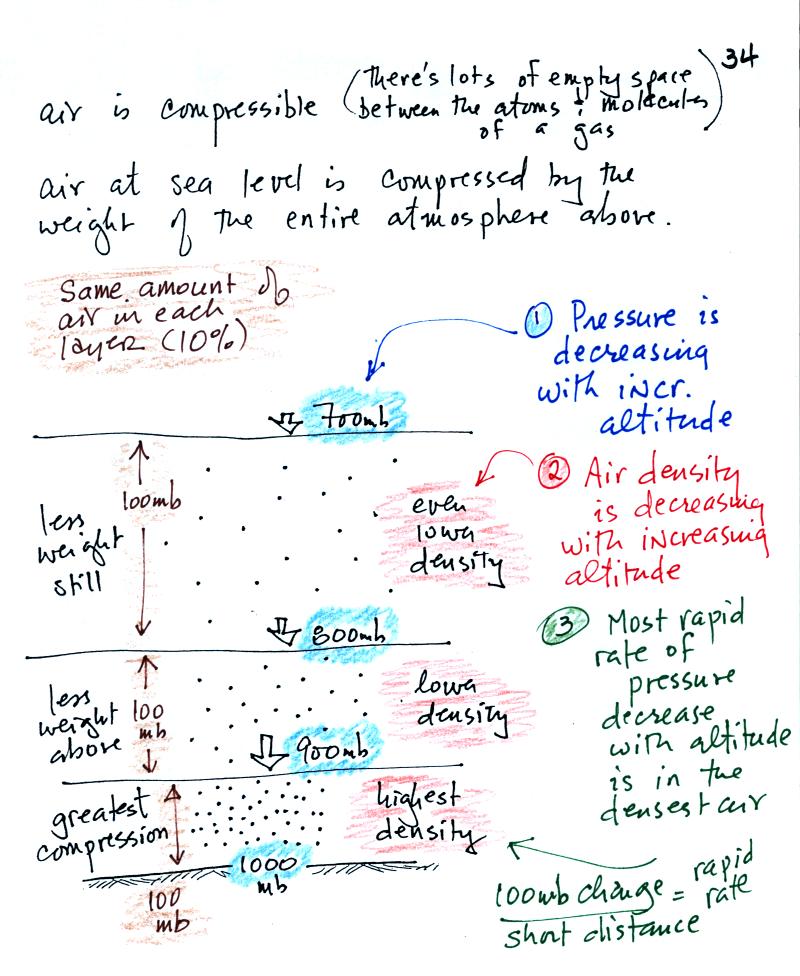Density is defined as mass divided by volume. A couple of
pictures will illustrate this and show what can cause density to change.

In the first pair of pictures two equal volumes contain different
amounts (masses) of air. Clearly the box on the right has the
higher density. In the bottom picture an initial volume is
compressed. The same amount of air is squeezed into a smaller
volume resulting in higher density.
Air is compressible, so a pile of mattresses might be a more realistic
representation of
layers of air in the atmosphere (more realistic than a pile of
bricks). We can use mattresses to
understand how air density changes with increasing altitude.

Here's a figure that wasn't shown in class. It reviews a lot of
what we have learned so far about pressure and density.
There's a lot of information in
this figure. It is worth
spending a minute or two looking at it and thinking about it.
1. You can first notice and remember that pressure
decreases
with increasing altitude. 1000 mb at the bottom decreases to 700
mb at the top of the picture.
Each layer of air contain the same amount (mass) of air. You
can
tell because the pressure decrease as you move upward through each
layer is the same (100 mb). Each layer contains 10% of the air in
the atmosphere and has the same weight.
2. The densest air is found in the bottom
layer. That is because each layer has the same amount of air
(same mass). The bottom layer is compressed the most so it has
the
smallest volume. Mass/( small volume)
gives a high density. The top layer has the same amount of air
but about twice the volume. It therefore has a lower density.
3. The most
rapid
rate of pressure decrease with increasing altitude is in the densest
air in the bottom air layer. It takes almost twice the distance
for pressure to decrease from 800 mb to 700 mb in the top most layer
where the air density is lower. You'll see this in some of the
slides in Dr. Ritchie's PowerPoint presentation.



